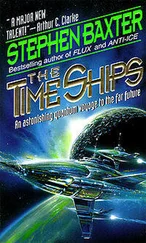Our first close-up views of Titan came in 1980 and 1981, when Voyagers 1 and 2 flew past Saturn. But Titan was just a ball of smog; we could see nothing of the surface. Then, in 2004, the Cassini spaceprobe arrived, with the Huygens lander, named for the pioneering astronomer, clinging to its side.
Titan really is like Pandora in many ways. Like Pandora it is a low-gravity moon of a giant planet, and, superficially, remarkably Earthlike. Huygens came down on what looked like a relic of a flash flood, a plain littered by worn pebbles. On Titan there are mists and clouds, and slow-falling rain; there are branching river valleys that lead to oceans crossed by waves hundreds of metres tall. One ocean, called the Kraken Mare, is as big as the Caspian Sea.
But Titan is an Earth reimagined in different materials. On Titan water-ice plays the role silicate rock does on Earth, and methane plays the part of liquid water. Those pebbles Huygens saw were ice, not rock. The methane cycle isn’t quite like Earth’s water cycle, so the weather isn’t the same; evaporation is slow, but the air can hold a lot of vapour. The result is long periods of drought punctuated by intense rainstorms. There could even be “cryovolcanoes,” volcanoes spewing liquid water; there is evidence of lava flows in the past. If you stood on Titan you would be a monster of molten lava!
And, like Pandora, Titan is full of opportunities for life.
Out of those layers of clouds, complex organic molecules—the stuff of life itself—continually drift down to the surface below. They are created by electrical storms in the atmosphere, and the reaction of sunlight and Saturn’s magnetism with the upper air. These organic molecules could be the basis of an Earthlike life: carbon-water life, maybe anaerobic (that is, oxygen-hating) methane-eating bugs.
But there could be other kinds of life. Maybe a more exotic sort of carbon-based life form, using ammonia as its solvent rather than water and a metabolism based on carbon-nitrogen bonds, could be found in the stuff bubbling out of the cryovolcanoes. This is the sort of life that might live in the oceans of “roof worlds” like Europa. Most exotic of all could be a community of slime-like organisms that use silicon compounds as their basic building blocks, not carbon as we use; they might live in the surface ethane lakes, so cold they favour the long but fragile silicon-silicon molecular chains on which this form of life depends. Such forms might also find a home on Triton, the even colder moon of Neptune, where there are lakes of liquid nitrogen.
Nowadays we envisage many kinds of life, and many diverse habitats in the solar system. But Titan is extraordinary, for it may be a junction for life forms related to types from deep within the solar system’s warm heart, and from its chill edge. Huygens only glimpsed this; we must go again.
But Titan, like the other bodies of the solar system, might have a value beyond science—and that’s what might put it at risk. Titan is a natural organic-synthesis machine, way off in the outer system. It could become a factory for future colonists, churning out fibres, plastics, even synthetic food, manufactured from carbon, hydrogen, oxygen, nitrogen. Further out in time, it may be possible to export Titan’s volatiles to inner planets lacking them; Titan nitrogen, taken away on a massive scale, could be used to terraform Mars, to make it like the Earth. Just as some once hoped the moon could be a stepping stone to the planets, so Titan, a vital resource pool on the fringe of interstellar space, may some day be a key refuelling dump for ships like Venture Star , on their way to the stars.
But surely the worlds of the solar system are more than just mines in the sky. There are already proposals to preserve the unique value of other worlds. Radio astronomer Claudio Maccone of Turin advocates a “protected antipodal circle” of radio silence covering the moon’s far side. This is the only place in the solar system permanently shadowed from Earth’s clamorous broadcasts and so ideal for radio astronomy, and worth preserving as a park of silence.
Certainly, I personally hope that by the time we get to Titan we will treat it with more respect than RDA treats Pandora.
So we have reached the effective edge of the solar system, and there have been wonders aplenty—but no true Pandora, nothing like Earth. To find life like ours we will have to go on beyond the sun’s family.
But how are we going to get there? Could we ever build a ship capable of reaching the stars? Will a Venture Star ever fly?
PART THREE

VENTURE STAR
“Are we there?”
—Jake Sully
The Interstellar Vehicle Venture Star is a starbound freighter, one of a fleet of twelve sister ships regularly plying the route between Earth and Pandora. The frequency of the voyages is why Colonel Quaritch is able to offer Jake a ride home only a few weeks after his arrival. Typically the ship will carry two hundred sleepers like Jake out to Alpha Centauri, and hundreds of tonnes of unobtanium back to Earth. In addition to a fifteen-strong crew there are also ten medical personnel on board, woken at the end of the journey to supervise the waking of the cryosleepers.
If you have your Avatar DVD to hand, take a look at the early scenes featuring Venture Star , as we see it in orbit around Pandora. It certainly looks an impressive piece of engineering, and so it should. James Cameron wrote a “bible,” a ten-page briefing document, detailing how the ship works, drawing on our best understanding today of how to build a starship. (There have been more starship studies than you might think; I’m personally involved in a study called Project Icarus, about how to send an unmanned probe to a nearby star.)
At the rear of the ship is an engine stack. The ship’s main drive is a rocket powered by the annihilation of matter and antimatter—in fact hydrogen and antihydrogen, contained in those big spheres, cryogenically cooled and held safely in magnetic bottles. As we’ll see the rocket engine is only used at the Pandora end of the journey. The engine stack is at the end of a long strut that leads to the crew compartments, which include a rotating arm. These components in turn huddle behind an array of forward-facing shields.
That ship is big , no less that fifteen hundred metres long. One reason for its sheer size is the need to keep the crew separated from the hazardous radiations of the engine. We have no spacecraft of anything like that dimension. Our largest space artefact is the International Space Station (ISS), which is seventy-three metres long and a hundred metres wide, including the solar panels, and masses over three hundred tonnes—a total mass which is in fact less than Venture Star ’s cargo capacity.
How does such a ship fly to the stars?
Venture Star undergoes short bursts of acceleration at the beginning and end of the voyage, and then spends most of its transit coasting, with the engines powered down. You can tell it must cruise because you can see that rotating arm turning around the ship’s spine, evidently a device to give the handful of alert crew artificial gravity. This makes engineering sense; Apollo cruised most of the way to the moon and back, with most of the fuel load of its huge Saturn V booster burned up in the first few minutes of the journey. During the boost phases, the fragile rotating arm is folded back against the ship’s spine.
When Venture Star is accelerating from the solar system, it doesn’t rely on its own engines at all. Instead it is pushed by beamed power from Earth, light from a tremendous laser that is caught by a huge sail, a bowl sixteen kilometres across held stable by rotation. The ship carries big mirror shields that in this phase of the voyage protect the habitable compartments from the laser beam’s intense glare. When the acceleration phase is over the sail is folded away. All this is done to minimise the mass of fuel Venture Star must carry.
Читать дальше











